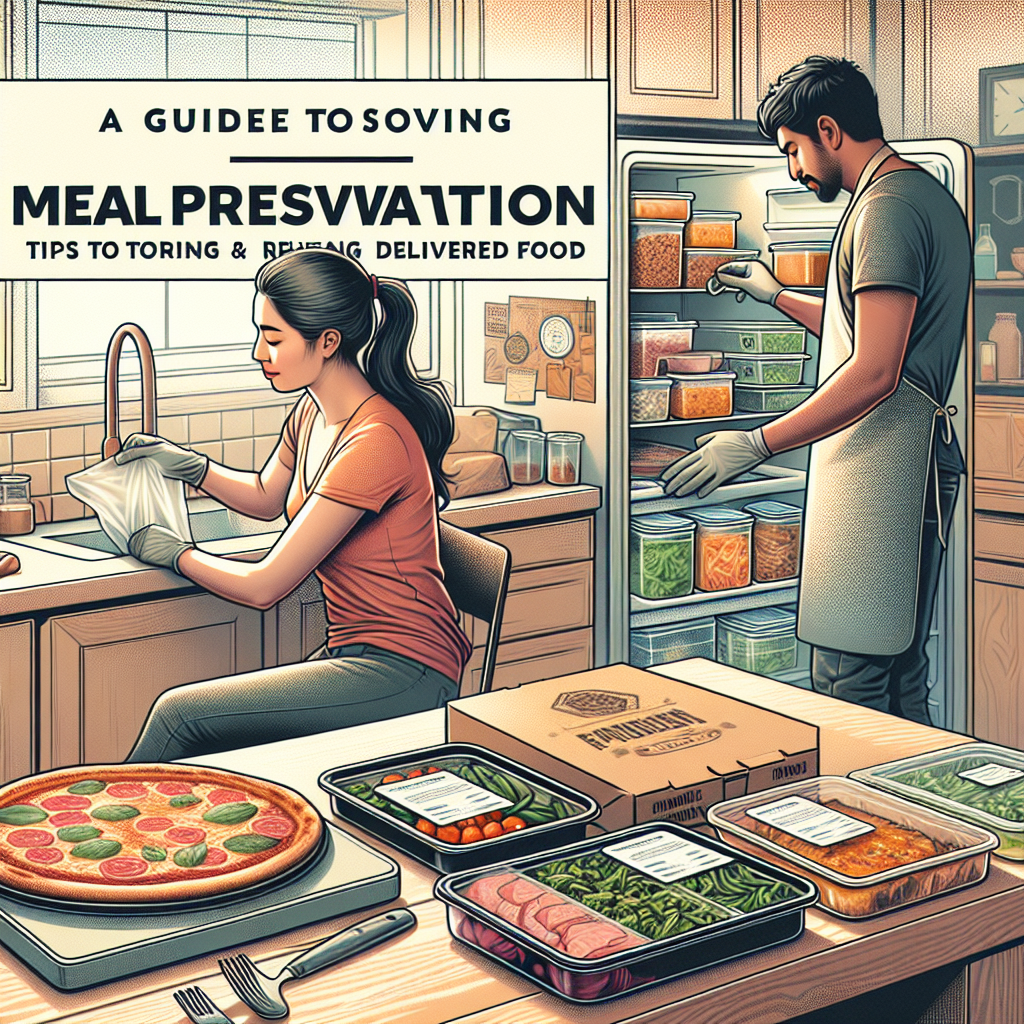In our fast-paced world, meal delivery services have become a popular option for busy individuals and families. However, the convenience of ready-to-eat meals often comes with questions about how to store and reheat them properly. In this guide, we’ll explore effective tips for meal preservation so you can enjoy your delivered food at its best, saving time and reducing waste along the way.
Why Proper Meal Preservation Matters
Proper meal preservation not only ensures food safety but also maintains the taste and nutritional quality of your meals. Undoubtedly, no one wants to throw out perfectly good food or risk foodborne illness. By following some simple storage and reheating tips, you can extend the life of your meals and continue to enjoy them throughout the week.
Best Practices for Storing Delivered Food
1. Cool It Down
One of the most critical aspects of food preservation is how quickly you store your meals after they arrive. Ideally, you should refrigerate or freeze your food within two hours of delivery. If your food is still warm, allow it to cool to room temperature before sealing it in airtight containers to prevent condensation from forming.
2. Use Airtight Containers
Investing in high-quality, airtight containers is essential for keeping your meals fresh. Not only do these containers prevent moisture from entering, but they also help in avoiding the absorption of odors from other foods in your fridge. Glass containers with silicone seals or BPA-free plastic containers work great for this purpose.
3. Label and Date
Labeling your food containers with the contents and the date they were prepared can help you keep track of freshness. This simple step can remind you to enjoy certain meals before they spoil and maintain an organized fridge.
4. Portion Control
If you’ve received large servings, consider portioning out your meals before refrigerating or freezing. Not only does this make it easier to grab individual servings, but it also helps keep the remaining food fresh for longer.
Freezing Tips for Long-Term Storage
1. Choose Freezer-Friendly Meals
Not all meals freeze well. When considering which delivered foods to freeze, opt for hearty dishes like casseroles, soups, and stews that perform well after thawing. Avoid freezing foods with creamy sauces or those with a delicate texture, as they may separate or become grainy upon reheating.
2. Use Freezer Bags and Containers
When freezing, opt for heavy-duty freezer bags or containers specifically designed for freezer use. Squeeze out excess air from the bags to minimize freezer burn, which can compromise the taste and texture.
3. Thaw Safely
When it comes time to use your frozen meals, the best way to thaw them is to transfer them from the freezer to the refrigerator the night before. If you’re in a hurry, you can use the microwave’s defrost function, but be sure to cook the food immediately afterwards to ensure food safety.
Reheating Strategies for Optimal Taste and Safety
1. The Right Temperature
Food safety guidelines recommend heating leftovers to a minimum internal temperature of 165°F (74°C). Using a food thermometer can help with this. But beyond safety, reheating to this temperature can help revive the dish’s flavor.
2. Use the Oven When Possible
For best results, try reheating your meals in the oven instead of the microwave. This helps to maintain the original texture and flavor of your food. Preheat your oven to around 350°F (180°C) and place your food in an oven-safe dish, covering it with foil to prevent it from drying out.
3. Microwave Safely and Effectively
If you opt for the microwave, place food in a microwave-safe container and cover it with a microwave-safe lid or a damp paper towel. This prevents moisture loss during heating. Stirring the meal midway through reheating can also ensure even heating.
Enjoying Leftovers: Tips to Enhance Flavor
1. Spice It Up
Leftovers don’t have to feel like “yesterday’s food.” Adding fresh herbs, a squeeze of lemon, or a dash of your favorite sauce can elevate your reheated meals. This small touch can breathe new life into your leftovers.
2. Combine with Fresh Ingredients
Consider transforming your leftovers into a new dish. For instance, leftover curry can be served over rice or used in a stir-fry. A little creativity can turn old meals into exciting new varieties.
Conclusion
Meal preservation doesn’t just prolong the life of your food; it enhances your overall dining experience. By implementing these tips for storing and reheating delivered meals, you can minimize waste, save money, and enjoy delicious food that tastes as good as when it first arrived at your door. So next time your meal delivery arrives, remember that with the right practices, you can savor every bite, even days later!
With proper care and attention, your favorite delivered meals can continue to bring joy to your table for a long time. Happy eating!


